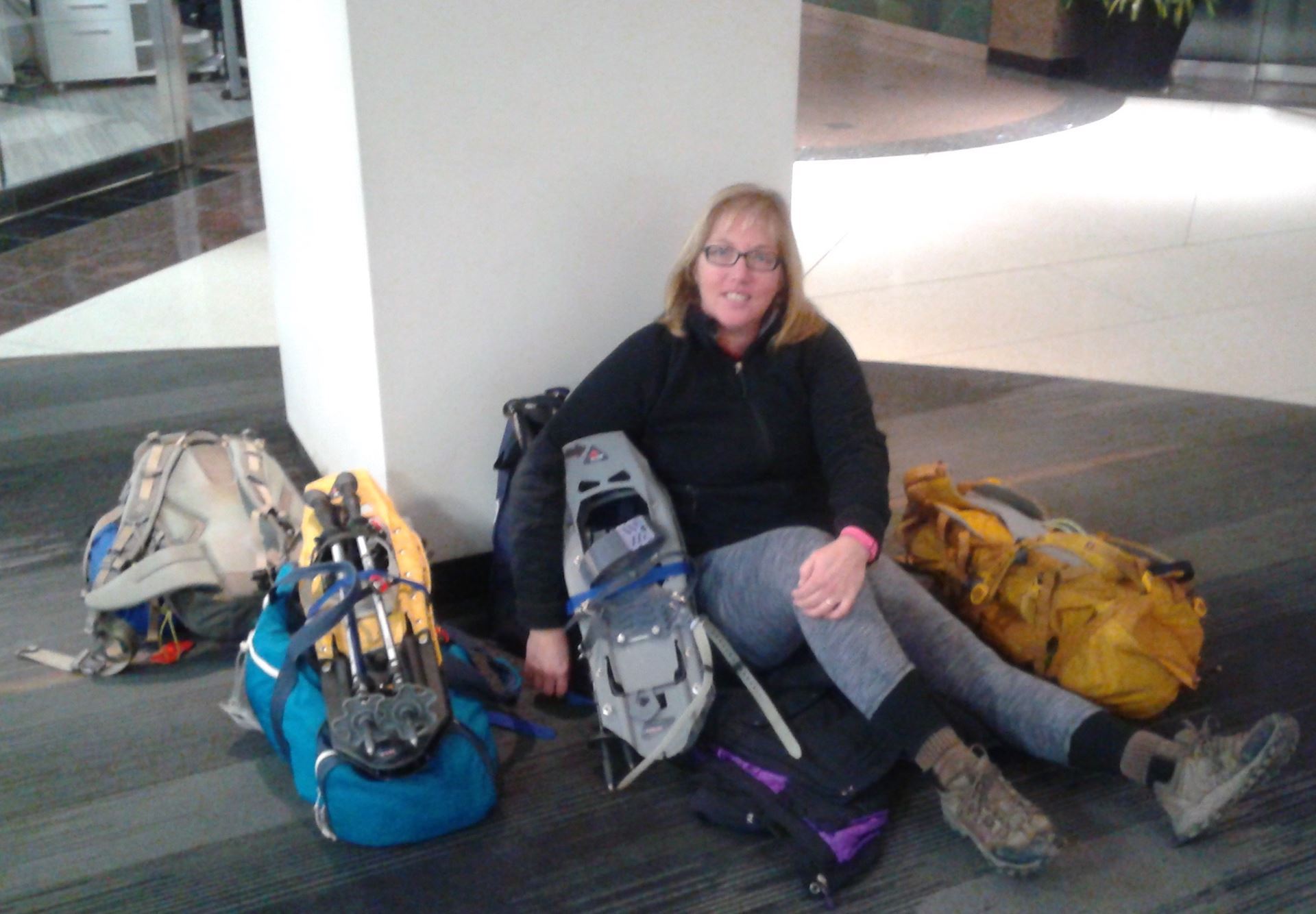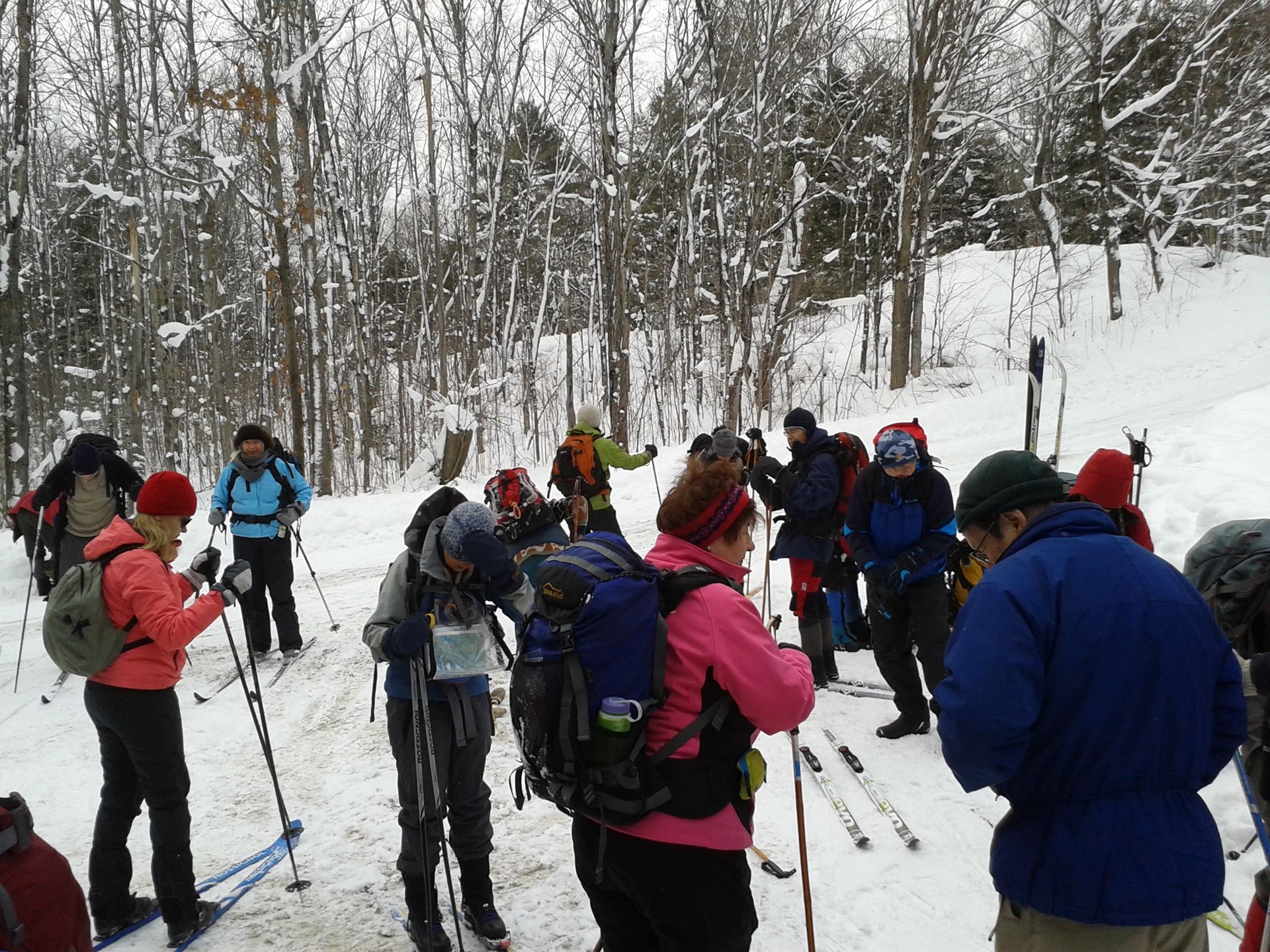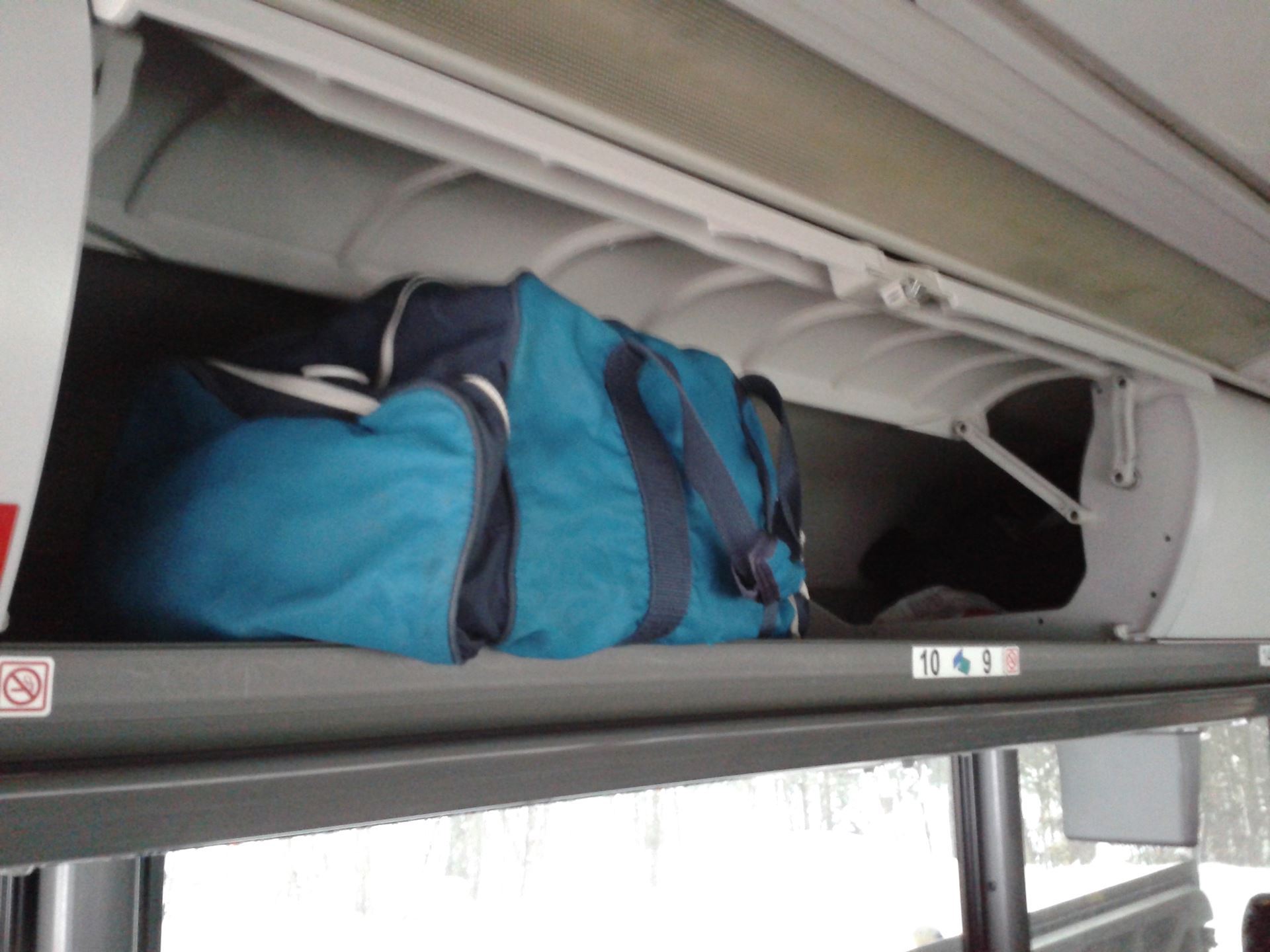| Five Winds Backcountry Ski & Snowshoe Club Discover the Muskoka Wilderness |
- Home
- Ski/Snowshoe 🆕
- Daypack Essentials
What Should I Have in My Daypack?
The Club takes travelling in the backcountry seriously. Extra precautions need to be taken as help may not be close by. Keep in mind that we ski and snowshoe in the wilderness. So being prepared for changing weather, as well as for incidents, is important. All participants need to be personally responsible for their safety and that they need to carry things that will allow them to deal with an “emergency”.
In terms of the size of the backpack, it is better to err on too big than too small. You don't have to fill it but you'll want one that can carry your content.


Below is a table that lists recommendations for what to bring in your backpack.
| Water and food | At least a liter of water, and consider insulating the bottle so it does not freeze Food should include a lunch and snacks - you may be burning a lot of calories. |
|
Extra Clothing (warm lunch jacket, rain shell if weather appropriate, mitts, jersey, light shell pants, socks) |
What if someone falls in a creek? The group should have enough clothes so that the person can change into dry clothing |
| Cell Phone, with optional portable charger | Navigation, communications |
| Personal Medical Info |
Relay info to medical personnel. All individuals should carry “dosages” of any personal medications they are taking for existing medical conditions (e.g. heart medications) which might need to be treated on the trail. |
| Whistle |
If you get separated from group and need to signal them. Whistle sound travels further than yelling. Whistle signal: 1- attention, 2- come here, 3- emergency |
| Basic First Aid | Tensor bandage, bandages |
| Map and Compass | Navigation by phone is not enough Be aware of how to send your location by texting |
| Two garbage bags | If someone's boots goes through ice on a frozen creek, change the socks and use bags inside wet boots |
| Knife/Multi-tool | Used to repair things |
|
Repair Kit (duct tape, wire, string, splints and hose clamps, etc.) |
What if someone's gear breaks (boots, poles, skis, clothes, day pack)? |
| Metal scraper | To scrape ice off bottoms of skis or snowshoes |
Don't forget to bring a change of dry shoes and clothes for the bus ride home. You can leave all that in the bus while you're out!

